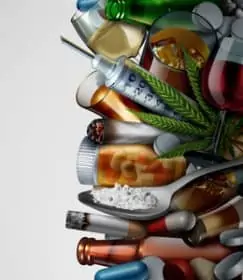What is the DOT Drug Test?
 The DOT Drug Test is a federally regulated test required by the Department of Transportation (DOT). The test was enacted by DOT to protect the safety of workers in the transportation industry and the public.
The DOT Drug Test is a federally regulated test required by the Department of Transportation (DOT). The test was enacted by DOT to protect the safety of workers in the transportation industry and the public.
The DOT recognized the need for maintaining a drug and alcohol free industry and passed the Omnibus Transportation Employee Testing Act in 1991, requiring DOT agencies to implement drug and alcohol testing for safety-sensitive employees. These rules are published by the Office of Drug and Alcohol Policy Compliance (ODAPC) within the office of DOT. The specific regulations are found in 49 Code of Federal Regulations (CFR) Part 40 and include the procedures to use when testing and how to return an employee to safety-sensitive duty.
Who is required to take the test?
Anyone designated as a DOT safety-sensitive employee is subject to DOT drug and alcohol testing. The tasks performed by the employee determine whether they are safety-sensitive employees, not their job title. Even those qualified for duty and not currently performing that duty are still eligible to be tested in the event they need to fill in for an emergency.
These employees hold jobs that can impact their own safety and public safety. Safety-sensitive positions can be found in the DOT modes:
- Federal Motor Carrier Safety Administration (FMCSA)
- Federal Transit Administration (FTA)
- Federal Aviation Administration (FAA)
- Pipeline and Hazardous Materials Safety Administration (PHMSA)
- Federal Railroad Administration (FRA)
- United States Coast Guard (USCG)
What is the procedure for the DOT Urine Drug Test?
If an employee is selected for a DOT urine drug test, there are several steps he/she will go through to complete the process.
- The employee is notified to submit to a urine drug test and the reason for the test.
- The employee will immediately report to the collection site.
- The collector will verify his/her photo ID and the employee will be asked to empty his/her pockets. His/her belongings will be kept in a secure area while he/she takes the test. The collector will secure the collection area, for example securing all the water sources and removing cleaning supplies/fluids before the collection.
- The employee will be given a sealed kit to privately provide a minimum of 45 ml. of urine. There is an exception to the privacy rule to allow for direct observation of a specimen collection in these cases: a return-to-duty test, follow-up test, issues surrounding attempted adulterations or substitutions of a specimen, or any other general questions surrounding possible subversion of the collection process, like a specimen with a temperate out of range.
- When finished, the employee will give the collector the container and they will check the temperature and color, then pour the urine into 2 separate bottles while the employee is present. The bottles are sealed and both parties sign the paperwork.
- The bottles are sent to the lab for testing and the results are sent to the Medical Review Officer (MRO). The MRO is a licensed physician who is familiar with DOT regulations and clinical experience in substance use disorders.
- The MRO acts as the gatekeeper of the results. In the event of a positive, adulterated, or substituted specimen, the MRO will interview the employee, review his/her medical records, or request that the employee have an examination by an approved physician.
- The employee may also request the other specimen be tested within 72 hours of the MRO interview.
- Lastly, the MRO reports the results to the employer.
If you have an employee or applicant with a verified positive drug/alcohol test, refusal to test or other violation, you have to remove them from safety-sensitive duty immediately. They will then be required to go through the DOT return-to-duty process with a Substance Abuse Professional (SAP) before they can return to work. ASAP has an 85% success rate in helping employees get back to work safely. Call 888-792-2727 to enroll today.



